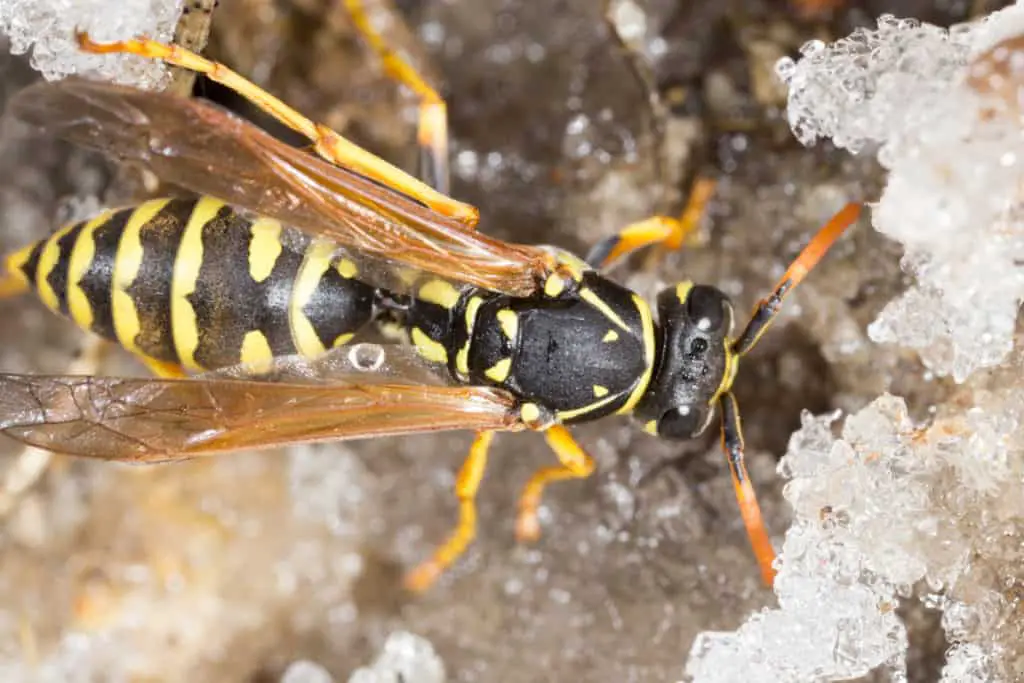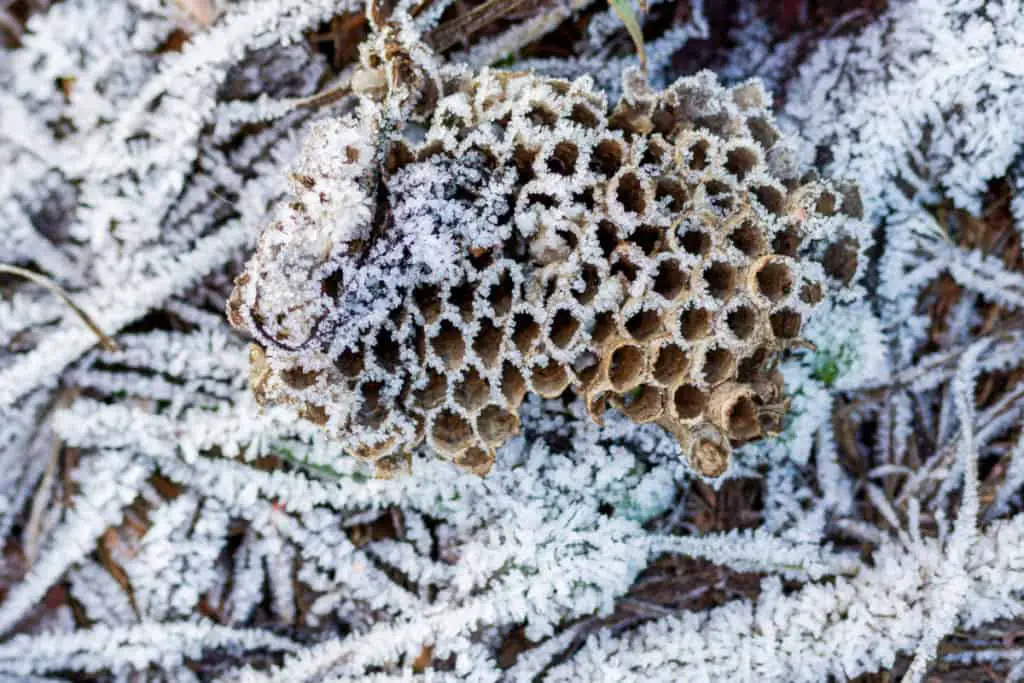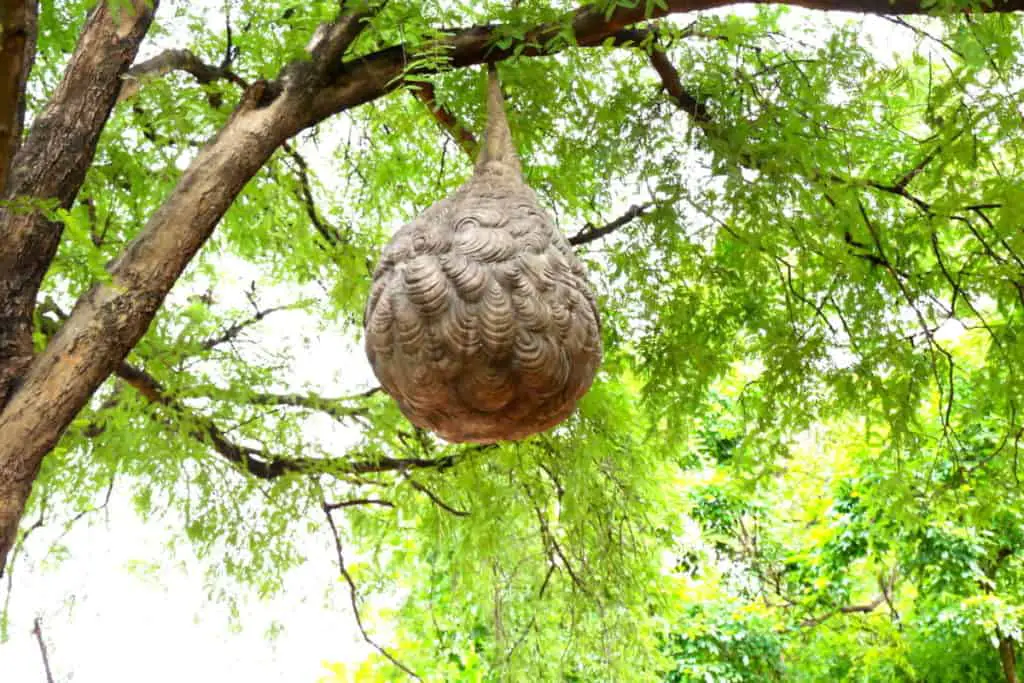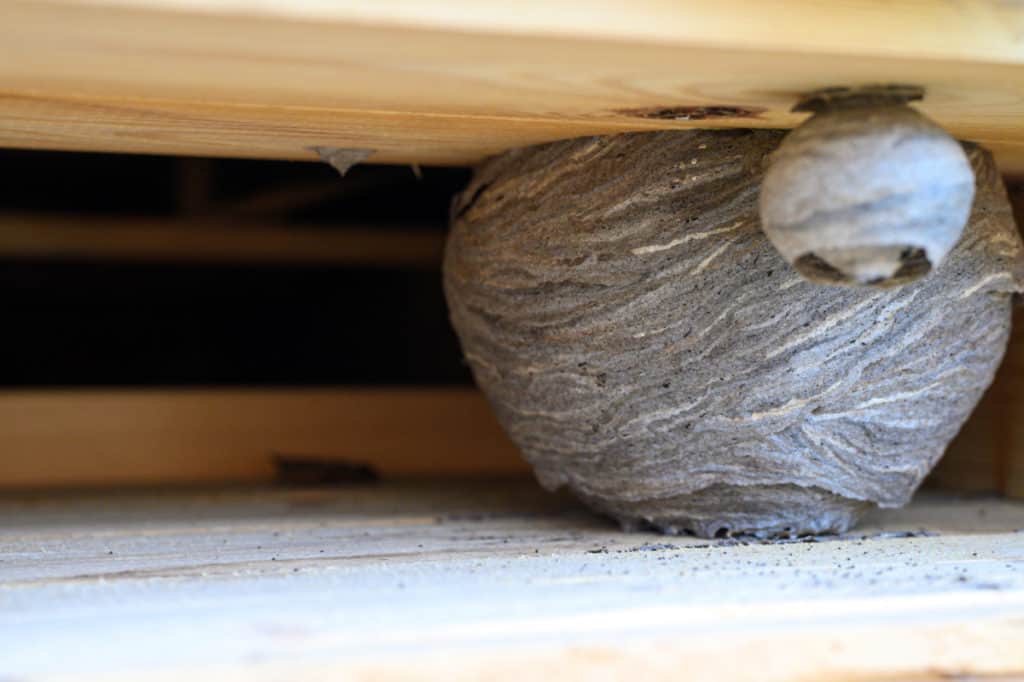
Wasps, the infamous buzzing picnic invaders can be found in various habitats and diverse species across the world.
You can often spot the stinging cousin of the honeybee in gardens and homes, structures like sheds, and garages. However, there are species that can be found in tropical forests and hot deserts. Some of these habitats can experience harsh or extreme changes in weather.
So the question is how do wasps, particularly the common Paper wasps and Yellowjackets cope with cold or heat, and at what temperature do they succumb and die?
Below 50°F wasps are unable to fly with their flight muscles shutting down. If wasps can’t fly, they can’t feed resulting in death. As the temperature reaches freezing wasps that are exposed will die. Mated queen wasps seek shelter to hibernate during winter conditions to ensure a new colony will live in the spring.
Read on to find out more.
Effects Of Cold On Paper Wasps And Yellowjackets
Paper wasps and Yellowjackets are also referred to as Vespine wasps (Vespula sp). They often build aerial nests under the roofing tiles, eaves, decks, shrubbery, or on the ground.
During cold winters, almost all wasps die except for the mated queens that find warm places to hibernate. They would spend the cold weather under the bark of trees, in leaf litter and mulch, or in cracks and crevices around structures, attics, and garages.
Many of the worker wasps starve to death while others are killed by the freezing.

As fall turns chilly it takes 5 to 7 days for the wasps to die under these conditions. Dwindling food sources, to a great extent, contribute to the mortality of the wasps.
Fo more information on the life cycle of wasps check out this article we have written, How Long Does A Wasp Live?
Do Wasps Use Their Nests To Stay Warm Or Keep Cool?
Wasps are warm-weather insects and construct their nests in spring and at the onset of summer. During the warm seasons, temperatures may rise significantly and will fall dramatically in winter. Most nests are abandoned in the fall and are not reused.
When winter comes around, many wasps will die as a result of the seasonal decline in prey which is a natural consequence of harsh climate change. The nests are of no practical use as shelter in winter hence the last wasps to leave are the queens which look for warm and safe places to spend the winter. In spring they identify nesting sites where they construct their new nests to lay eggs.
We have an interesting article that takes more about wasps nests comparing the differences and similarities with beehives. The article is called, Wasps Nest Vs Beehive. How Different Are They, Really?
Wasps Wintering in Mild Winter Climates
Vespid wasps behave a little differently in mild climates such as Florida, California, Hawaii, and Australia where Yellowjackets have been established as locals. In these environments, a colony does not break up at the end of the warm season.
The colony will overwinter intact and when the weather becomes warm again the wasps will expand the existing nest. The nest usually has several queens laying eggs and it can occasionally achieve enormous size.

How Much Heat Can Wasps Tolerate?
Wasps are known to spread water on their nest during hot days to cool them down. In extreme cases, the increasingly higher temperatures in the course of the early breeding season may force the wasps to abandon the nest.
When the sun shines on the tiles or other structures that cause heat build-up and result in high nest temperatures of up to 45.8 degrees Celsius, these temperatures touch the upper thermal lethal limit (heat tolerance).
Small colonies or single insects cannot survive nest temperatures this high (upper critical thermal maximum). Wasps may resort to abandoning the nest if the temperature range gets consistently high enough to distress them.
Different wasp species have different heat tolerance ranges. This means they die from heat exposure at different temperature levels. A temperature range of between 35.8 °Celsius to a maximum of 42.4 degrees Celsius will kill wasps at varying periods of exposure.
In laboratory experiments involving Yellowjackets with the use of incubators, reveals some very detailed results and insights into this subject.
Wasps exposed to 42.4° Celsius died within 1.7 to 2.5 hours. Other factors such as humidity, respiratory response, and duration were also taken into consideration.
For more comparisions of wasp species it is worth checking ou these two article we have written:
What Happens To Wasps During Winter?
During cold winters, as previously mentioned, most wasps die except for the mated queens that find a warm place to hibernate. They go into a state of diapause and are semi-dormant. However, they are under constant threat from predators. While in this state during the winter months, their metabolism and development slow down greatly throughout this period.
While the worker wasps in a nest will also begin to slow down because of the drop in temperature, they continue to take care of the queen in order to ensure her survival during winter.
Some sluggish worker wasps may still be out and about but will seem unable to move and may not attempt to fly away if you approach. The fact that food is scarce kills off the wasps eventually.
For more information on how wasps behave coming into winter you could check another article we have written on this topic, What Happens To Wasps In Winter?
Do Wasps Hibernate For The Winter Indoors?
The simple answer is yes. Wasps can be found hibernating in all manner of sheltered or protected spots: houses and homes Sheds, garages, extension roofs, lofts, attics, woodpiles, you name it.

The buzzing critters find their way into homes or other structures through small crevices near the roofline when searching for favorable overwintering spots.
They then enter a state of diapause. Unless there is an unusual period of warm weather, the wasps are unlikely to be seen until spring. If there’s enough of them, wasps can construct a nest indoors to keep warm in winter.
However, warmer weather inside the house may stimulate the wasps to become active again and they will seek an escape route leading back outdoors to start a new nest. The warmth fools them into coming out of hibernation. It is at this point that the wasps may make their way into the living areas of the home.
These wasps are sluggish and can be easily removed. Paper wasps are not aggressive by nature but they will sting if they are disturbed or feel threatened.
These wasps, having been “pulled” from hibernation, more often than not will starve because there is no food for them outside in the winter cold or indoors where it’s too warm to favor diapause.
We have three article that are related to this topic of wasps in winter and where they like to seek shelter from the cold. If you are interested check them out:
What Happens To Wasps In Winter?
The Wrap Up
A reliable indicator of cold temperature that wasps cannot withstand begins with near-freezing conditions and frost on the ground. Wasps are not known for surviving the cold winter temperatures. Worker wasps die mostly because of starvation in winter.
The queens seek warm, sheltered places in leaf litter and structures to go into hibernation until spring when they come out to start building nests and laying eggs.
In climates that experience mild winters, nests do not break up but they continue to build up when the weather warms up. In hot conditions, wasps may perish at varying temperatures of between 35.8° Celsius and a maximum of 42.4° Celsius.
If you would like to know more about how temperature effects other kinds of bugs then these articles we have written a worth a look:
Do Clover Mites Die In Winter?
How Do Bees Survive The Winter?
Sources
https://www.google.com/amp/s/www.jcehrlich.com/blog/the-essential-guide-to-wasps/amp/
https://www.ncbi.nlm.nih.gov/pmc/articles/PMC3337444/
https://www.fwpest.com/blog/overwintered-wasps
https://www.pestuk.com/blog/cold-kill-wasps/
https://gpmpest.co.uk/news/when-wasps-die-off-nests/
https://www.google.com/amp/s/www.trulynolen.ca/how-does-cold-weather-affect-wasps/amp/
